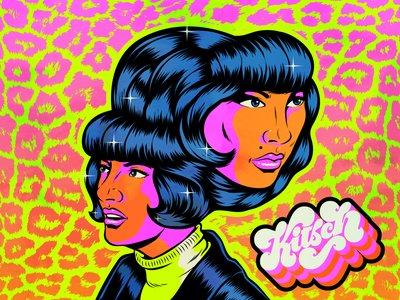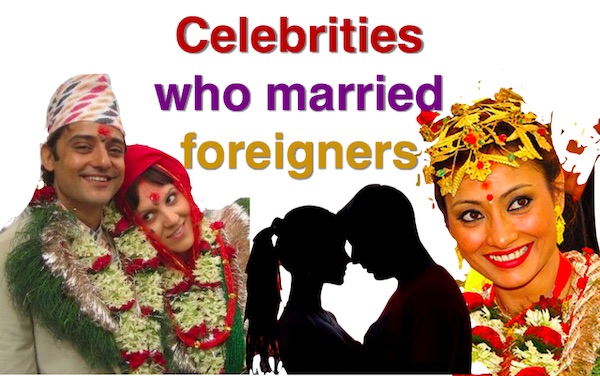
Many authors have used the words belonging and community in their writings. According to their definitions communities are places, relationships and common interest. They collaborate and trust each other to act in a coordinated manner. Others consider a community a smaller group. Here are a few definitions.
Trust is essential for negotiation, collaboration and negotiation
Mutual trust is crucial when two people collaborate on a project, or in negotiations. This will ensure that the process runs smoothly. Trust is key to ensuring that people act with integrity and honor in negotiations. This is especially important for parties who are not familiar with each other.

In any negotiation process, trust is the first thing to do. It is important that you communicate clearly with each other and establish rapport. Establishing rapport requires you to open up about yourself. However, it is important not to assume the other party's complete trust too soon. Trust should be earned over time.
Smaller communities
There are many different definitions for smaller communities. Some of these are neighborhoods that provide housing for the homeless. Others are dependent upon welfare services. Smaller communities have historically been an indicator of the nation's best culture. Bell and Newby also provide an additional definition. Whatever the definition, it's important to recognize the differences between these communities.
These concepts can have similar meanings, despite the differences in their definitions. In the case of communities, shared values, social ties, and action were the most frequently cited elements. Similar results can be seen in the case of communities. While sharing and diversity were less common, over half of respondents mentioned at least one element.
Rural communities
Rural communities are often overlooked in discussions about rural policy, but they must be treated as equal partners in the national dialogue. Policymakers should resist stereotyping rural areas for their homophobia, racism, sexism, xenophobia, xenophobia, or ableism. Recent examples of rural communities' challenges have been highlighted by several recent examples. A segment on "Today" recently visited Storm Lake, Iowa for a segment. This town has about 20% of its Latino population.

Rural communities are particularly vulnerable due to their dependence on natural resources. Changes to climate patterns can alter their food production, alter animal or plant species ranges, and increase coastal erosion and wildfires.
FAQ
What examples are there of pop culture?
Pop Culture is the 21st century's art form. Pop Culture includes all forms of popular entertainment such as music, film, TV and video games, fashion, advertising and comics. In his 1985 book, Amusing Ourselves Too Death (1985), Neil Postman first coined this term. He defined "pop" as a style of mass communication that uses cheap tricks and formulaic devices to create an illusion of spontaneity and uniqueness.
However, he said that most people don’t enjoy true enjoyment because their culture has conditioned them to want media experiences that make it seem superior to others. In addition, he argued that this type of cultural expression had contributed to the loss of critical thinking skills among young adults.
Pop culture has also been referred to as popular culture or consumerism.
Are Tik Tok and its pop culture?
The answer is Yes It's not for teenagers. Anyone can use these short videos to show how they feel, express themselves, and share life moments with friends.
Every day, the app is used by over 200,000,000 people worldwide. Every day, this number increases by millions.
TikTok provides a fantastic opportunity for brands and consumers to build meaningful relationships.
Many influencers have established huge followings on TikTok. These creators create original content to engage audiences all over the globe.
What are you waiting to do? If you want to take advantage of this trend, here are four ways to do it.
-
Create viral content
-
Engage Influencers
-
Use Visuals Effectively
-
Be creative with your audience
Who is the inventor of Pop Music?
Invented by Frank Zappa. He used the word pop music to describe his style of music.
He said that his goal was to make music that is accessible to everyone. That's why he called his music pop music.
Zappa also coined the phrase "You know it’s POP when ..."" which refers to something being popular if it is enjoyed by many people. Michael Jackson's Thriller is one example of the greatest-selling albums.
Zappa's definition of pop music is different from how it is now. Pop music is today all music. However, in the past, only certain genres of music were considered to be pop.
How can I make pop culture part of my marketing strategy
It is important to study the trends to see how pop culture can be used in marketing strategies.
Let's take, for example, the promotion of a new movie. What kind of promotion would you be able to run?
You could create a trailer with clips taken from the film. A clip could be found that features your product or service and included in the video.
Another option is to create a parody trailer using clips from other movies.
A promotional campaign could be created based on the plotline of the movie if you were promoting a product/service that is related to the movie's theme. You might promote a product that can help astronauts remain healthy while in space.
If you had a business connected to the movie's theme, you could run promotions based on the plotline. If your company sells food products, you might offer customers free samples if they buy tickets to the movie.
What are some examples of pop culture in 2020?
Music is rapidly changing. This year, artists like Travis Scott, Post Malone and Billie Eilish all reached number one on Billboard's Hot 100 charts. This was a record-breaking feat for any artist.
The same goes for streaming services. Spotify reported that it streamed more than 10 billion hours worth of audio content last fiscal year. This is five times more than what Spotify users listened to just five years back!
This has resulted in a major shift in the way people consume media. Nowadays, most people are more interested in consuming content than creating.
All age groups have easy access to high-quality audio content. This means anyone can record, edit or mix their music and then release it.
It's no longer necessary to go to university and study classical instrumentation to be able to play your favorite song. Simply download an application, add your voice and upload them on YouTube.
You don't have to be a musician, but you can watch others make it. You can find videos on many channels of songs, including parodies and covers.
What is the popular music culture?
Popular music culture is a dynamic phenomenon that can take many forms.
Popular music culture is defined by its use of certain styles of music (e.g., rock, jazz) and lyrics. It also includes visual media, like television, fashion, advertising and film, that have an impact on the careers of artists and public perception.
It's also all about how fans interact their favorite artists.
Popular music culture has one element: the rise of "superstars", artists who have gained fame and fortune.
These icons transcend many genres and have become cultural icons. Their popularity has also influenced the development of popular music.
Some other elements of popular music culture are:
* The rise recording technology – from acoustic instruments up to electric guitarists and microphones.
* The inventions of the record player, the radio and other electronic devices.
* The dawn of rock 'n' roll;
* The introduction of TV and film;
* The advent of MTV and VH1;
* The creation and use of the internet.
What does pop culture teach us?
Our society today places more importance on material goods than all other things. This is particularly true for young people. They spend hours every day looking at screens. They watch movies, play video games, and surf the web. All this distracts them and makes it difficult to focus on school work. This causes them to fail classes.
It is a world where everyone wants in. That means being popular. Popularity is dependent on having money, clothes, or other possessions. This causes some people to do things they don't like.
Technology has made us dependent. Technology has given us access to all kinds of information. Not all information is correct. Many false rumors circulate on the Internet. These rumors spread quickly because people share them on social media sites. It's easy to post something without checking whether it's true.
People have lost the ability of thinking critically. They believe what they see online. They trust what they hear on television and in magazines. They stop thinking for and about themselves. Instead, they follow the flow of others.
We lose control of our lives when we depend on others to tell we what's going on. Pop culture teaches us that we can depend on others. It can also lead to lazy people. Although the truth is out there and we often don't find it, it can make us lazy.
Statistics
- For example, the term hater meaning someone who strongly undermines or criticizes others, often due to pathetic jealousy, likely emerged from hip hop culture, such as the term playa hateras, used by influential rapper Biggie Smalls as early as 1995. (simplicable.com)
- [17][18][19]Definition[edit]According to author John Storey, there are various definitions of popular culture. (en.wikipedia.org)
- Yet a Nielsen study shows they account for 42% of the country's most-watched content on streaming services. courtesy Nielsen (npr.org)
- Recently, the market share across Western Europe has ranged from 60-75% (Hopewell, 2013). (socialsci.libretexts.org)
- Less than a decade later, that statistic rose to 90% (Dager, n.d.). (socialsci.libretexts.org)
External Links
How To
What companies have used pop culture to promote their products?
In the past few years, many companies have used popular culture as part of their marketing strategy. Here are just a handful:
-
McDonald's - The McDonald's Superbowl campaign featured clips from films like 'The Big Short' or 'Inside Out'. A commercial called "I'm loving it" was also available. It featured images of people eating and dancing to Drake's songs.
-
Nike - In 2013, Nike released a commercial featuring basketball player Kevin Durant. He says that he was inspired and motivated by the movie Space Jam to get his shoes on and play basketball.
-
Coca-Cola - Coca-Cola created a series of commercials called "Americas Choice Awards" during the summer 2015. These were based on categories, including Best Movie, Best TV Show, etc. Each category received a 30-second advertisement at a fictional ceremony.
-
Google - Google announced in November 2015 that it would be sponsoring the Super Bowl for the first time since 2010. This included launching a website called google.com/superbowl, allowing users to watch highlights from previous games. Google would allow users to vote for their favorite team and display the results along with the current scores.